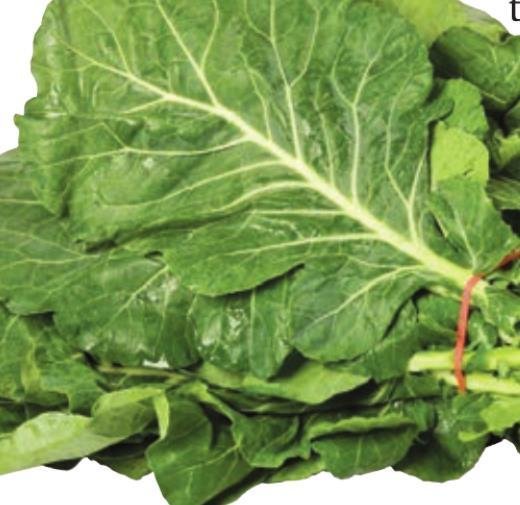Collard greens well cooked are a Southerner’s treat
T he soft rain raps on the car as we drive into the Lexington County countryside. We pass many acres of fields, either being harvested or newly planted. There are so many shades of green it would be …
This item is available in full to subscribers.
Subscribe to continue reading. Already a subscriber? Sign in
Get 50% of all subscriptions for a limited time. Subscribe today.
Please log in to continueNeed an account?
|
Collard greens well cooked are a Southerner’s treat
The soft rain raps on the car as we drive into the Lexington County countryside. We pass many acres of fields, either being harvested or newly planted. There are so many shades of green it would be impossible for acolor wheel to portray them all.
These gorgeous verdant fields look like a quilt thrown over a bed, each patch a bit of the past that becomes vital and new to yet another generation.
When I moved to Lexington, I was happy to find so many farm stands. These farm stands have been in place long before it was “cool” to procure your food in this manner. Growing up in Charleston, the plots like these I knew as a child are now covered with houses and hotels. I miss the earlier time when food was planted and grown for a community and shared with those who didn’t have as much as they needed. I learned to cook from female relatives who loved the idea of sharing. To this day I cook more than we could possibly eat just so I can share it with others.
We arrive at Taylor’s store and are greeted by a Taylor family member. Taylor’s always has everything I want. I love walking up to the wooden stands, which today hold watermelon, cantaloupe, onions, potatoes of all sorts, apples, oranges, lemons, limes, fresh beans, asparagus, cucumbers, tomatoes, squash, peppers and fresh collard greens. I gather as many other vegetables as I want and made sure I have a big bunch of these thick, earthy leaves.
This produce satisfies much more than hunger—it feeds the soul. As we were backing out of the parking lot, I noticed the peach trees blooming in the distance, their beautiful pink color so vibrant against the rainy, grey sky.
The first thing I did back home was wash the greens so I could get them started for the many hours of cooking. I searched for the largest pot I own. If you have not cooked greens in the past, it is important to know they are better the next day, or the next. Leftovers are highly desired.
I will serve the greens later in some blue and white soup plates that date to 1870. These plates are large with a foliate border of leaves, so like the shape of the collard green leaves. These plates have a deep well so the pot liquor will nestle around them.
I will use my huge silver “banquet forks” that were made in Europe in the 1870s, along with some large, round, silver gumbo spoons from the 1880s. I will likely use a silver ladle originally made for punch to bring them from the cooking pot to the soup plate. This will be a feast for the eyes!
This recipe is one from the Corley family of Lexington, Bobbie Fuller of Springdale. “Aunt Bobbie” is gone now, but her recipes live on.
Lexington County Collard Greens Wash and chop a whole bunch greens into pieces that can be easily consumed after cooking. Chopping the greens seems to make them more flavorful and tender.
Use a very large pot and bring 2 gallons of water to a boil. Add a palm full of salt and a palm full of black pepper.
Add the greens gradually as the water begins to boil. The greens will soften as they get hot and the pot will hold more and more as they begin to cook.
Add a ham hock or country ham pieces. Allow the meat to mix and boil with the cooking greens. Now add a palm full of white sugar. Now add 1/3 cup of cooking oil, any sort you like. Stir everything together.
After this comes to a rolling boil, turn down the heat until it is just bubbling and cover the pot. Make sure there is plenty of water covering the greens. Let the greens cook for 4 to 5 hours. Add water if you need to, but the idea is to cook them down with little water, which will intensify their flavor. They will perfume your home as they cook. This is a smell Southerner’s are familiar with!
Dinner will be collard greens from Taylor’s, Charleston Cheese Cookies, chicken breast poached in white wine, lemon and capers over Carolina Gold Rice—a bit of the Midlands and the Lowcountry of South Carolina coming together with great success!
Bon appetit!
Other items that may interest you










Comments
No comments on this item Please log in to comment by clicking here